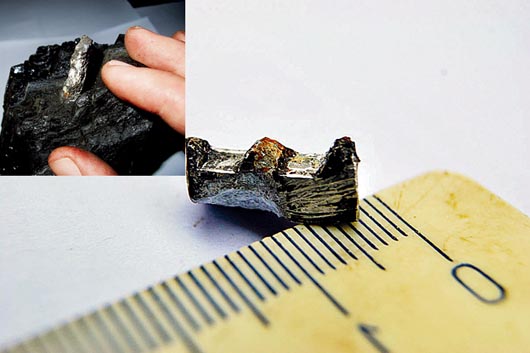Climate Change and Spicy Food
By Minda Berbeco

It
is tough being a freelance writer. You have to be pitching stories
left and right, grabbing interviews whenever you can and literally dance
for every drink, every lunch and every story. Meanwhile, any jerk with a
blog could come along and steal your job. Your life is best defined by
these three words: Dance, monkey, dance!
Or so I’m told. While freelancing can be a cold and cruel world, being
the friend of a freelancer is awesome. You end up tagging along to random strange locations (
Fermentation Festival, anyone?) where people are talking about weird things (colon health!) and doing unusual things (
cedar chip enzyme bath? Sure!).
While your friend is hunting down photographs of kombucha mothers and
pygmy goats, as their “date” you get to surreptitiously stuff your face
with complementary goat salami, and sip sherry while Sean Lennon
performs his dad’s
“Oh Yoko!” — OK, that was a little freaky.
As a diligent friend, you put up with these unusual encounters, because, like,
what else are you going to do with your time?
One of the best of these “friend missions” involved an encounter with
hot sauce. Or I should say, many hot sauces. A certain writer-friend
had been given the mission of taste-testing 10 of the spiciest hot
sauces on the market. These were not simple “five alarm” sauces –
please, if you are going to truly have a hot sauce you wouldn’t give it
such a clichéd name. We are talking hot sauces with names involving
major players in the underworld, outlandish scatological terminology and
references to BDSM activities that I’ve only heard about on the Savage
Love. These were not meant to be shared in polite company.
After a few hours of nose-dripping, eye-watering fun, we had chosen
the tastiest and hottest of the bunch. We were no doubt experiencing
the spiciest of the spicy, but the question was clear,
could we go even hotter?

It turns out, that with climate change the answer is, Hell yeah!
In a higher carbon dioxide environment, habanero plants (you know,
the really f*ing hot ones) have more peppers. Those peppers are larger
and when ripe, they have more capsaicinoids (which includes capsaicin –
the hot stuff — and a couple other secondary metabolites) (1). Since
capsaicin is thought to be a deterrent to herbivores (hello bugs!) and
fungal infection, this could be a good thing for both hot
sauce-enthusiasts and plants alike.
Moreover, while other chili plants (which are a little different from habaneros) may be more susceptible to
bacterial infection in a warmer climate, when combining a warmer and higher carbon dioxide environment they are not more susceptible to
fungal
infection (2). Could it be that higher CO2 is increasing capsaicin and
other defensive compounds, thereby making the plants a little bit
better at protecting themselves from fungal infection?
Eh, possibly. We have just entered what is called “hypothesis-ville”.
It’s somewhere between “maybe-town” and “perhaps-square”.
If you are looking for a cool experiment, this could be your next
USDA grant. You just need a panel of Texan scientists to read your
proposal and a couple freelance writers to follow you around to document
the whole thing. Who knows? If it works out, you might find me sitting
in the back of your very first press conference on the topic. I’ll be
the one stuffing those complimentary donuts into my pockets.
Because, that’s what friends are for.
Further Reading:
(1)
Enrichment of carbon dioxide in the atmosphere increases the capsaicinoids content in Habanero peppers (Capsicum chinense Jacq.)
(2)
Elevated CO2 and Temperature Effects on the Incidence of Four Major Chili Pepper Diseases





 "What
is middle class?" is a simple question with a very complex answer.
Obviously, it depends on where one lives - but in Manhattan, New York,
with cost of living that are akin to skyscrapers compared to other places
in the United States, the answer becomes much muddier:
"What
is middle class?" is a simple question with a very complex answer.
Obviously, it depends on where one lives - but in Manhattan, New York,
with cost of living that are akin to skyscrapers compared to other places
in the United States, the answer becomes much muddier:


 Throwing
tantrums when not allowed to play video games ain't exactly a new thing
for parents, but there's a small twist in what the Yang family in Chongqing,
China, is facing:
Throwing
tantrums when not allowed to play video games ain't exactly a new thing
for parents, but there's a small twist in what the Yang family in Chongqing,
China, is facing:



 It
is tough being a freelance writer. You have to be pitching stories
left and right, grabbing interviews whenever you can and literally dance
for every drink, every lunch and every story. Meanwhile, any jerk with a
blog could come along and steal your job. Your life is best defined by
these three words: Dance, monkey, dance!
It
is tough being a freelance writer. You have to be pitching stories
left and right, grabbing interviews whenever you can and literally dance
for every drink, every lunch and every story. Meanwhile, any jerk with a
blog could come along and steal your job. Your life is best defined by
these three words: Dance, monkey, dance! It turns out, that with climate change the answer is, Hell yeah!
It turns out, that with climate change the answer is, Hell yeah! 





 Paul
Marshallsea of Merthyr Tydfil, Wales, was barbecuing at Bulcock Beach
in Australia when he heard bathers yell "Shark!" The 62-year-old tourist
saw a shark approaching children and ran into the water, grabbed the
shark, and pulled it away from the youngsters.
Paul
Marshallsea of Merthyr Tydfil, Wales, was barbecuing at Bulcock Beach
in Australia when he heard bathers yell "Shark!" The 62-year-old tourist
saw a shark approaching children and ran into the water, grabbed the
shark, and pulled it away from the youngsters.


